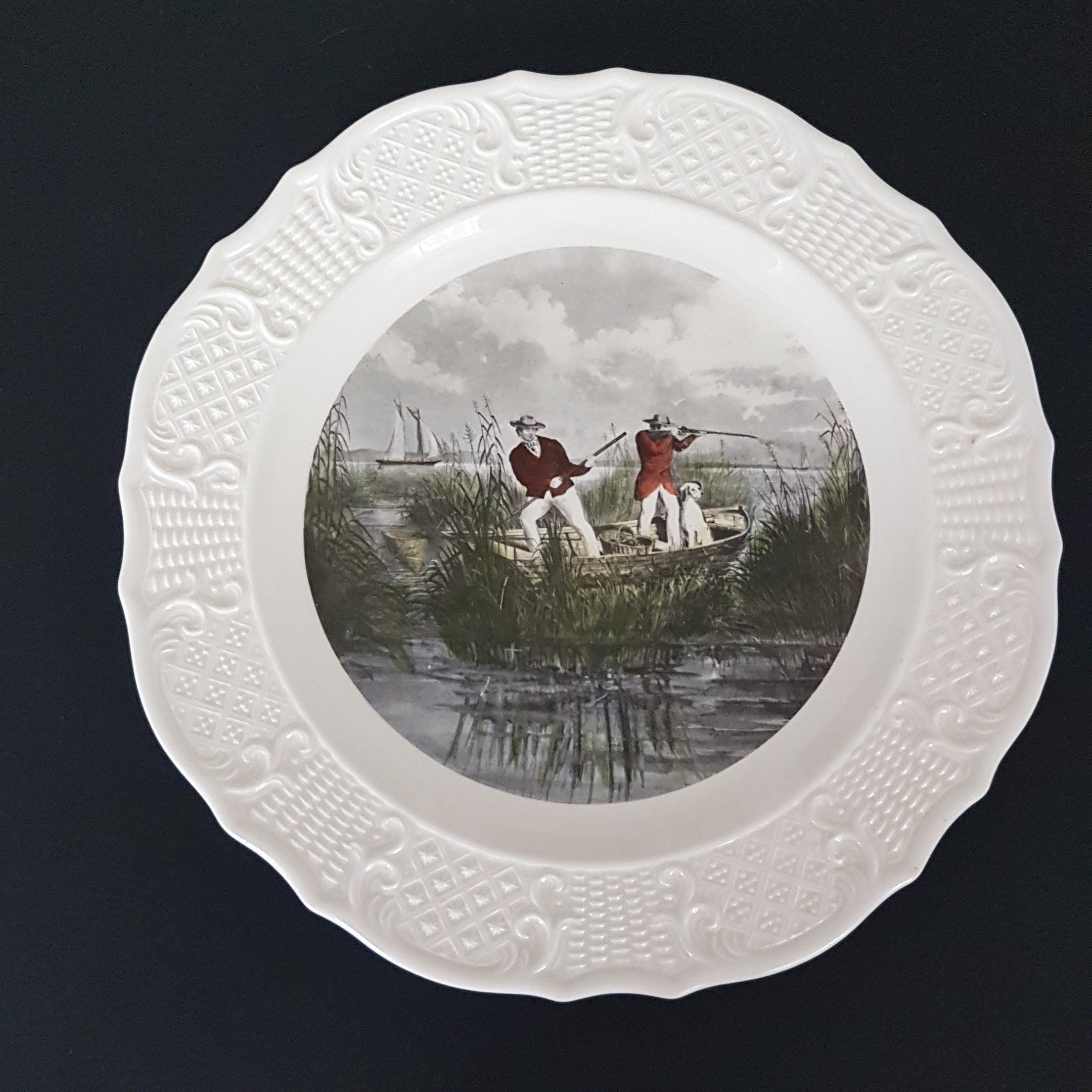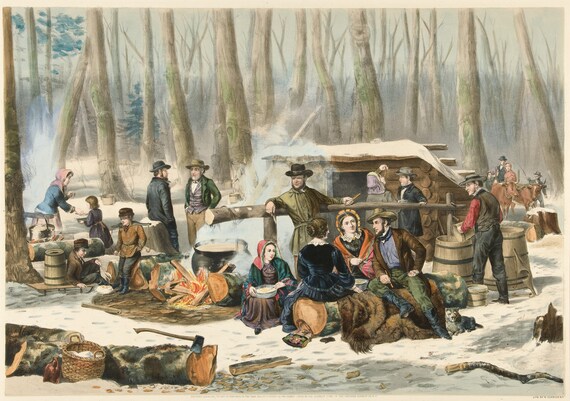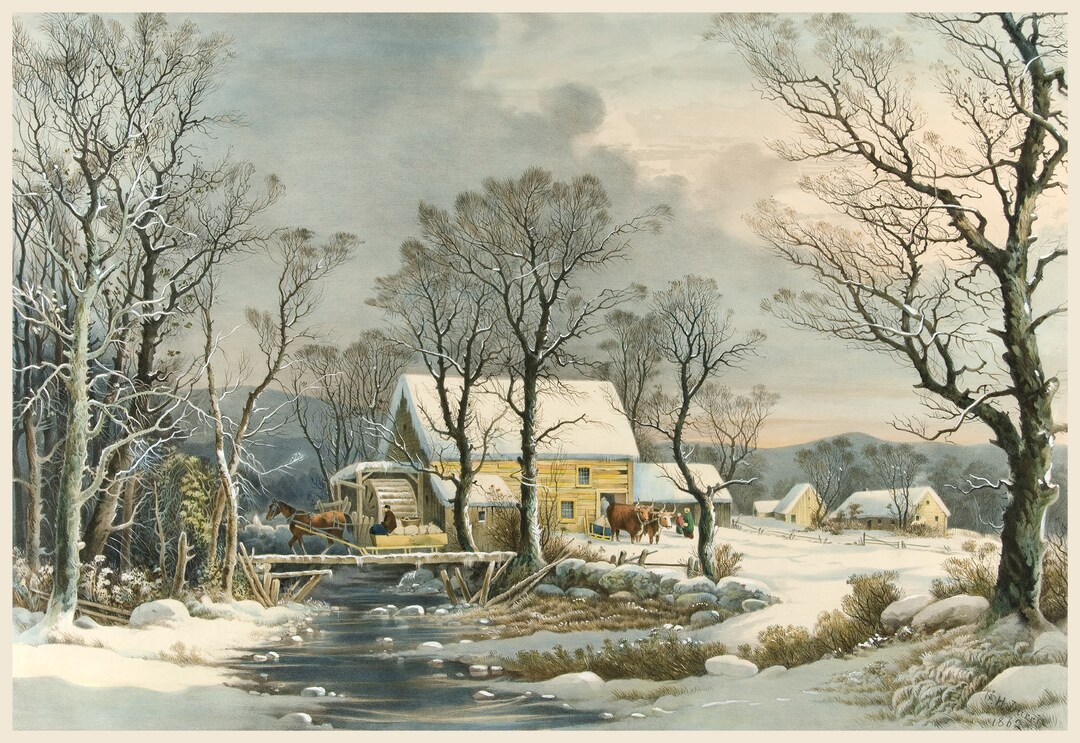Are Currier And Ives Reproductions Worth Anything?

Currier and Ives, a name synonymous with 19th-century American lithography, evokes images of idyllic landscapes, bustling cityscapes, and nostalgic scenes from a bygone era. While original prints by Currier and Ives are highly sought after by collectors and art enthusiasts, reproductions of these prints are widely available and often spark curiosity about their value. This article explores the historical significance of Currier and Ives, the factors affecting the value of their reproductions, and how collectors can assess the worth of these prints.
The Legacy of Currier and Ives
The Rise of Lithography in America
Currier and Ives were pivotal in popularizing lithography in the United States. Founded by Nathaniel Currier in 1834 and later joined by James Merritt Ives, the firm became known for its ability to produce affordable prints that were accessible to the masses. Lithography, a printing technique based on the immiscibility of oil and water, allowed for detailed and vibrant images that could be produced relatively quickly and inexpensively.
The Impact of Currier and Ives
The firm produced thousands of prints depicting various subjects, from rural scenes and historical events to portraits and political cartoons. These prints not only served as decorative art pieces but also as a form of visual journalism, capturing the essence of American life in the 19th century. As a result, Currier and Ives played a significant role in shaping the visual culture of the era.
Quick Info Table: Currier and Ives Overview
| Aspect | Details |
|---|---|
| Founders | Nathaniel Currier and James Merritt Ives |
| Established | 1834 |
| Technique | Lithography |
| Subjects | Landscapes, historical events, portraits, and more |
| Legacy | Influential in American visual culture |
Understanding Reproductions
What Are Reproductions?
Reproductions are copies of original art pieces, often created using modern printing techniques. In the case of Currier and Ives, reproductions are typically made from images that have been reprinted from the original lithographs. These reproductions can vary in quality and fidelity to the originals.
Factors Affecting the Value of Reproductions
While original Currier and Ives prints can fetch high prices at auctions, reproductions generally hold less monetary value. Several factors influence the worth of these reproductions:
- Edition and Age: Older reproductions, especially those created closer to the original production period, may be more valuable.
- Quality: High-quality reproductions that closely mimic the original prints can be more desirable to collectors.
- Condition: As with all art, the condition of the reproduction plays a crucial role. Prints that are free from damage, fading, or significant wear are more likely to be valued.
- Provenance: A documented history or provenance can increase a reproduction's value, especially if it has been part of a notable collection.
Assessing the Value of Currier and Ives Reproductions

Key Considerations for Collectors
If you own a Currier and Ives reproduction or are considering purchasing one, there are several steps you can take to assess its value:
-
Research the Print: Familiarize yourself with the specific image and its history. Understanding the context and popularity of the print can offer insights into its potential value.
-
Examine the Quality: Look for reproductions that have been well-crafted, with attention to detail in the printing process. High-quality paper and vibrant colors are indicators of a well-made reproduction.
-
Consult Experts: Art appraisers and antique dealers specializing in lithographs can provide professional assessments of your reproduction's value.
-
Compare Prices: Research similar reproductions on the market to understand current trends and pricing. Online auction sites and antique shops can offer valuable comparisons.
The Role of Market Demand
Market demand significantly influences the value of Currier and Ives reproductions. Popular scenes or those with particular historical significance may attract more interest, driving up prices. Conversely, less sought-after prints may not command as high a price.
Alternative Perspectives on Value
Beyond Monetary Worth
While monetary value is a common consideration, it's essential to recognize that art holds intrinsic value beyond price. Currier and Ives reproductions can be treasured for their aesthetic appeal, historical significance, and the personal enjoyment they bring to owners.
Collecting for Personal Enjoyment
Many collectors choose to amass Currier and Ives reproductions for personal enjoyment rather than financial gain. The prints offer a window into a different time, providing a sense of connection to the past and enriching the cultural tapestry of a collection.

Conclusion
Currier and Ives reproductions, while generally less valuable than original prints, hold their own significance in the world of art collecting. Understanding the factors that influence their value, such as edition, quality, and market demand, can help collectors make informed decisions. Whether prized for their historical resonance, aesthetic beauty, or personal significance, these reproductions continue to captivate audiences and preserve the legacy of Currier and Ives.
In closing, while the monetary worth of Currier and Ives reproductions may vary, their true value lies in the stories they tell and the connections they forge between the past and the present. Whether you are a seasoned collector or a newcomer to the world of lithographs, these prints offer a unique glimpse into American history and the enduring power of art.



Comments ()